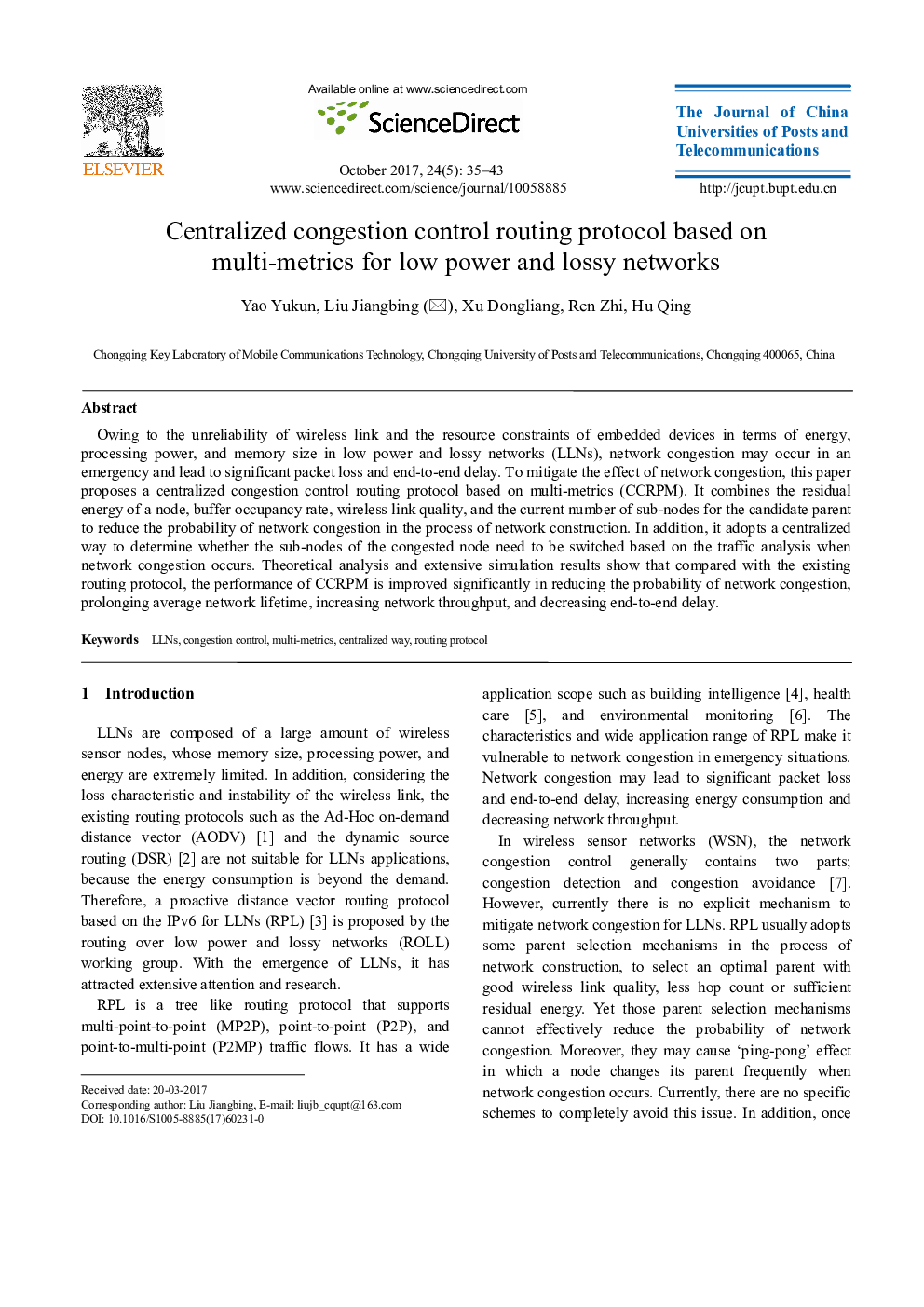| Article ID | Journal | Published Year | Pages | File Type |
|---|---|---|---|---|
| 7116689 | The Journal of China Universities of Posts and Telecommunications | 2017 | 9 Pages |
Abstract
Owing to the unreliability of wireless link and the resource constraints of embedded devices in terms of energy, processing power, and memory size in low power and lossy networks (LLNs), network congestion may occur in an emergency and lead to significant packet loss and end-to-end delay. To mitigate the effect of network congestion, this paper proposes a centralized congestion control routing protocol based on multi-metrics (CCRPM). It combines the residual energy of a node, buffer occupancy rate, wireless link quality, and the current number of sub-nodes for the candidate parent to reduce the probability of network congestion in the process of network construction. In addition, it adopts a centralized way to determine whether the sub-nodes of the congested node need to be switched based on the traffic analysis when network congestion occurs. Theoretical analysis and extensive simulation results show that compared with the existing routing protocol, the performance of CCRPM is improved significantly in reducing the probability of network congestion, prolonging average network lifetime, increasing network throughput, and decreasing end-to-end delay.
Keywords
Related Topics
Physical Sciences and Engineering
Engineering
Electrical and Electronic Engineering
Authors
Yao Yukun, Liu Jiangbing, Xu Dongliang, Ren Zhi, Hu Qing,
